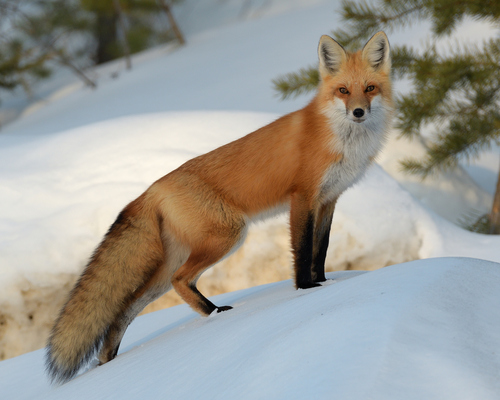
Red Fox
With its fiery red coat and keen senses, the adaptable red fox thrives from forests to cityscapes. Its cunning nature and varied diet define this masterful predator's ecological impact, weaving through ecosystems as both vital hunter and clever survivor.
3-5 years
Lifespan
Length: 46 - 89 cm; Height: 36 - 51 cm
Size
Red, Black, Silver
Color
10 months
Age of Sexual Maturity
56-70 days
Age of Weaning
31 mph
Top Speed
Least Concern
Conservation Status
Stable
Population Trend
Distribution Range of the Red Fox
Vulpes vulpes, commonly known as the red fox, has a native range that encompasses much of the Northern Hemisphere. This includes North America, Europe, Asia, and parts of North Africa. They are found across a wide range of countries within these continents, from the tundra to semi-desert regions.
Red Fox's Habitat
Environmental Conditions
Red foxes are highly adaptable and can inhabit a diverse array of environments. They are commonly found in forests, grasslands, mountains, deserts, and urban areas. The climate in these regions can vary drastically from cold, snowy areas in the Arctic tundra to hot, dry conditions in semi-deserts.
Ecological Niche
Red foxes are omnivorous and occupy a generalist niche, allowing them to exploit a wide range of food sources including small mammals, birds, fruits, and invertebrates. Their adaptability and opportunistic feeding behavior enable them to thrive in diverse ecological settings and contribute to their widespread distribution.
Copyright @ Nature Style Limited. All Rights Reserved.
 English
English